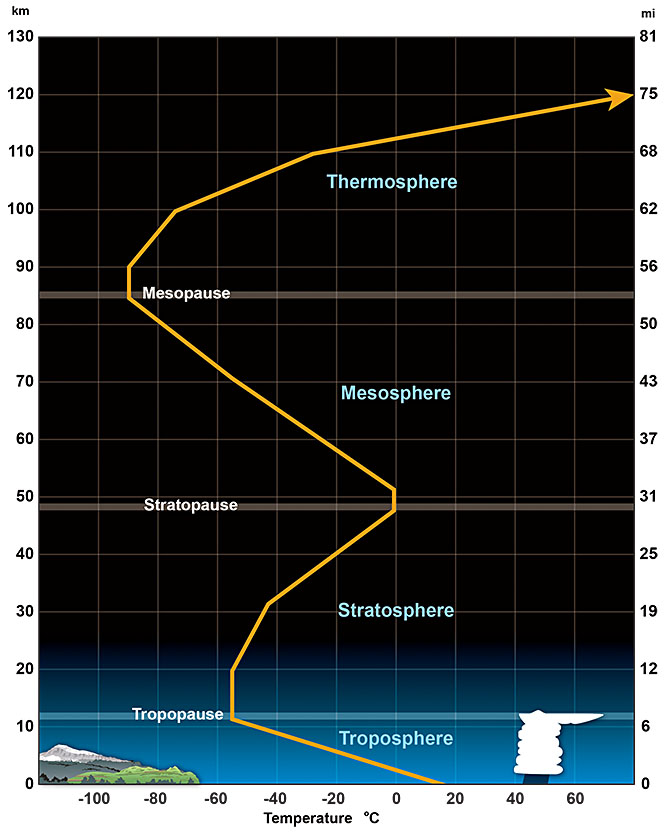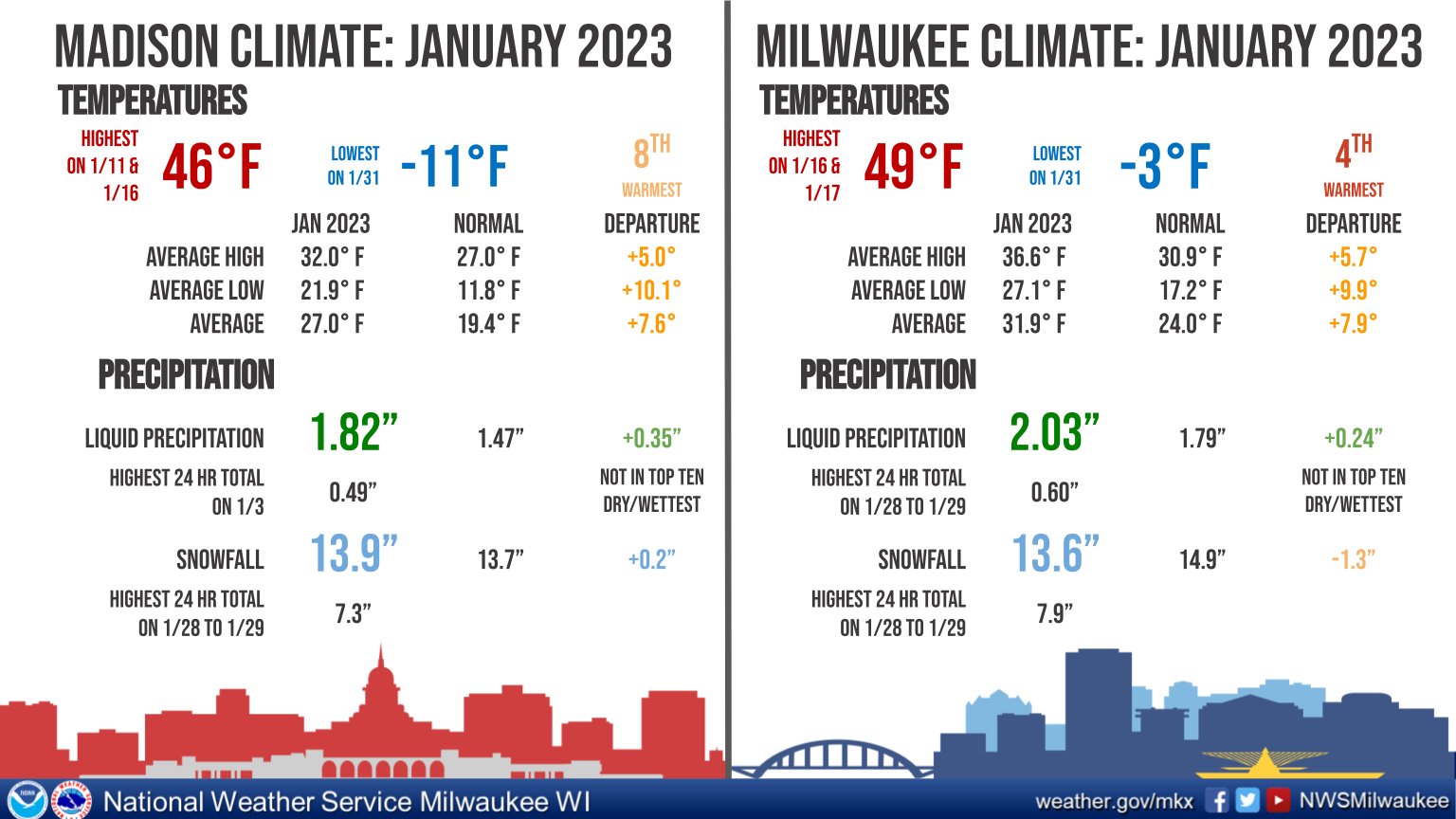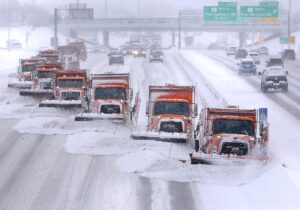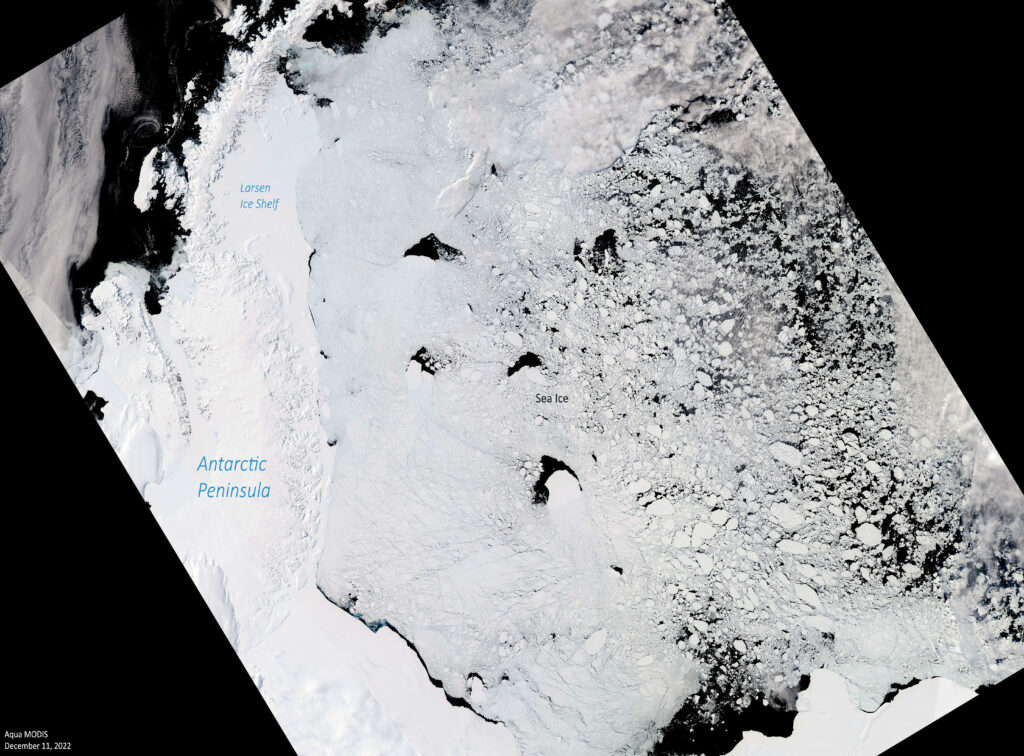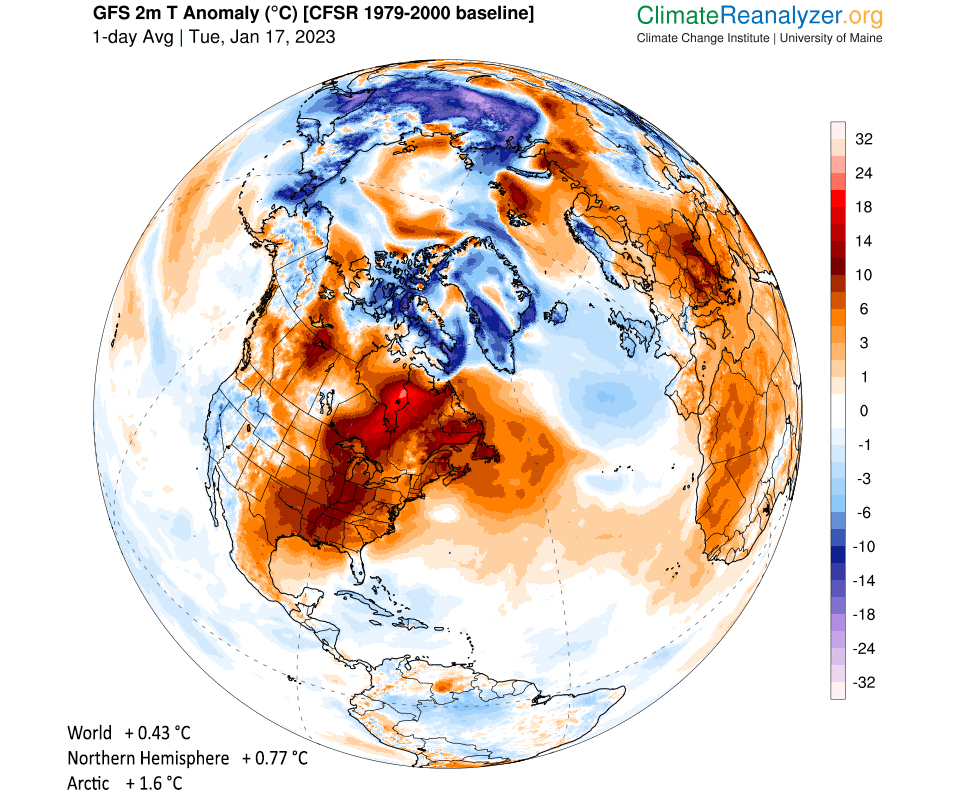The region of the atmosphere closest to Earth, where the temperature decreases as you go up, is called the troposphere. The top ranges from about 6 miles over the cold poles to 10 miles over the tropics.
Above the tropopause lies the stratosphere, where temperature increases with altitude. Temperatures increase because ozone molecules in the stratospheric ozone layer absorb solar energy within the stratosphere. Air flow in the stratosphere is much less turbulent than in the troposphere. For this reason, jet aircraft pilots like to cruise at stratospheric altitudes, where the flight is less bumpy. In polar regions, the bottom edge of the stratosphere starts about five miles above the ground and extends upwards to around 30 miles.
The polar vortex is a band of strong winds, high up in the atmosphere, that spins counterclockwise around the North Pole. At the southern edge of the vortex is the polar jet stream, which separates warm air to its south from increasingly colder air to its north.
A sudden stratospheric warming, or SSW, occurs in the winter, when the polar stratosphere warms and the winds that normally flow from west to east around the pole weaken dramatically and even reverse direction. This phenomenon occurs about six times per decade and leads to a breakdown of the polar vortex. SSWs can cause the polar night jet to weaken, which allows cold air near the polar cap to expand into the middle latitudes.
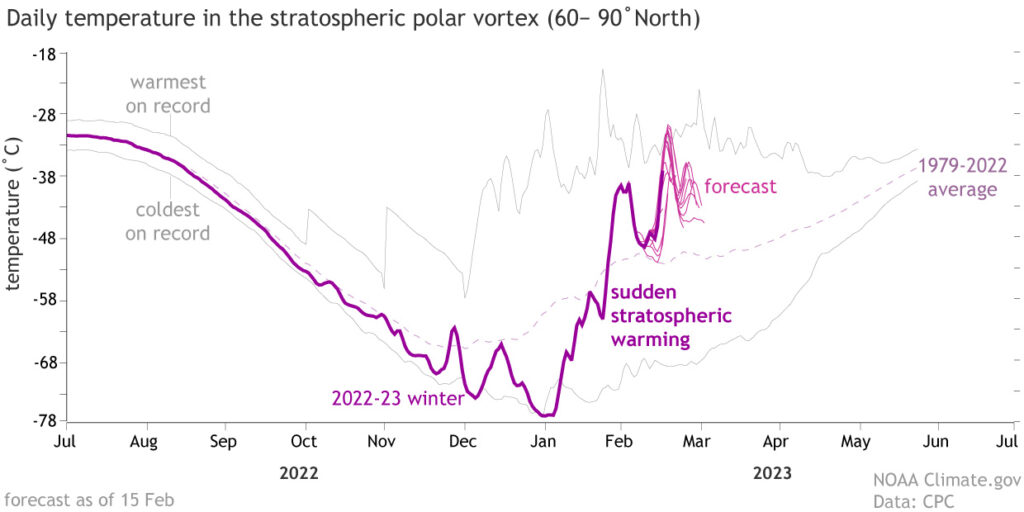
Weather models are signaling a sudden stratospheric warming event in the coming week. This could bring more wintry weather across the Northern Hemisphere. The main uncertainty with these events is that we don’t know exactly where this cold air will end up across the Northern Hemisphere.
Steve Ackerman and Jonathan Martin, professors in the UW-Madison department of atmospheric and oceanic sciences, are guests on WHA radio (970 AM) at 11:45 a.m. the last Monday of each month. Send them your questions at stevea@ssec.wisc.edu or jemarti1@wisc.edu.

